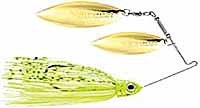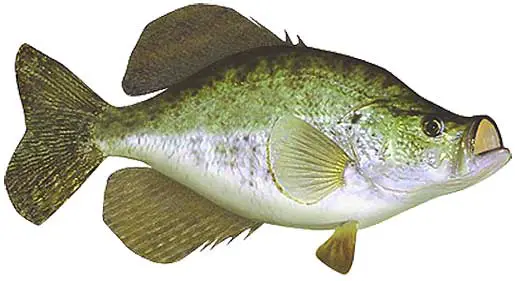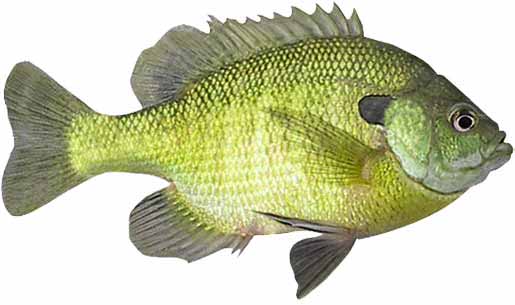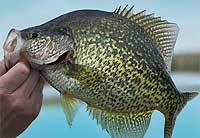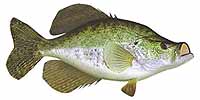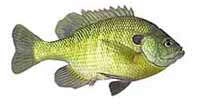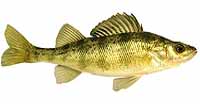Fishing Report For Lake Lemon, IN
By Rick Seaman
August 27, 2025
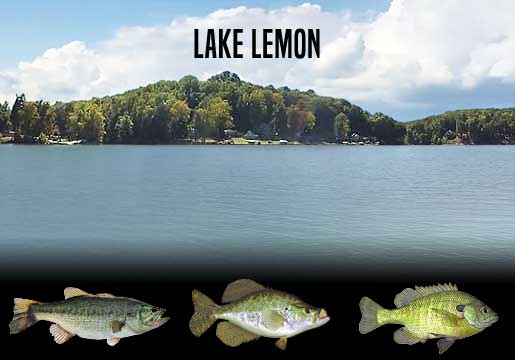
Fishing Reports
Popular Fish Species Lake Lemon, Indiana
Largemouth Bass
Current Report: Good To Very Good
SUMMER. Water temperatures are in the high 70's, and summer patterns are coming to an end. Bass have feeding shallow, early and late in the day. They have been caught on topwater, crankbaits and swimbaits. Wacky-rigged stick worms are catching finicky bass when the bite is slow. Largemouth bass here feed on gizzard shad, small sunfish and crawfish. During the hotter parts of the day, they are being caught on points, channel edges, and and around shallow vegetation that provides shade.
FALL. AS Fall arrives, bass here will remain shallow, 10 to 12 feet or less, as schools of baitfish into shallow areas where swimbaits, slow-rolled spinnerbaits, and Texas-style worms have been successful in prior years. As deeper water cools, bait and bass move away from the bank to points and ledges where flutter spoons are often the ideal bait.
WINTER. Lake Lemon freezes over, so winter bass fishing is generally limited to after ice-out. Cold water will isolate them around some of the deeper structure, flats, points and creek channels. They can be found from 10 to 18 feet deep. Here they hold, feeding less frequently, awaiting warmer water to return in Spring.
SPRING. Once water temperatures rise into the low 60's, largemouth will move from wintering holding areas, to shallower water around spawning areas. Jerkbaits, spinnerbaits, swim jigs, and vibrating jigs typically get bites just away from the shoreline. At this time they are feeding aggressively, preparing for the spawn. Once water warms into the mid to high 60's, they will move into 1 to 4 feet of water, and create nests, then lay their eggs. Immediately afterwards, females move to deeper water and males remain to guard the eggs, and then the fry. After a couple weeks, the males also move to slightly deeper water. Crankbaits, vibrating jigs, plastic worms and swimbaits are catching bass during this period.
White Crappie
Current Report: Good
SUMMER. Water temperatures are still in the high 70's, as Summer comes to an end. Crappie are still being caught at depths of 10 to 12 feet. Anglers are also locating schools of crappie hanging above deep above rocky structures, on steeper rocky banks and around creek channel edges.
FALL. Baitfish, soon will be moving into shallow flats, coves and bays, which will draw crappie into these areas. Here they will feed heavily in preparation for the cold Winter. Small spoons, along with minnows, hair jigs, and crappie jigs, are good options during this feeding marathon. Late fall starts the migration deeper toward winter holding areas, for both crappie and baitfish. Flutter spoons or live minnows are ideal during this transition
WINTER. Once the shallows start cooling rapidly, crappie will migrate to deeper holding areas, mostly off shore. At this time they are typically caught using a very slow presentation, in 12 to 18 feet of water. When the lake freezes over, ice fishing for crappie has been good, and the crappie may move a bit shallower under the ice.
SPRING. In early Spring, crappie begin staging in 8 to 12 feet of water, just outside shallow, protected spawning areas. Spring is the ideal time to be on the water, as crappie have moved shallow to spawn. At that time, they are typically caught in 2 to 4 feet of water. Docks, brush, wood and vegetation are where most anglers typically catch good numbers using small crappie jigs or live minnows. After the spawn, crappie move outside the spawning area and typically hold deeper on the closest cover. Once they move off the beds, anglers are reporting good success using fish finders and forward facing sonar to locate schools of crappie, which tend to stack vertically around cover. Light tackle with 4 lb to 8 lb line is a popular choice.
Bluegill
Current Report: Good To Very Good
Bluegill are a primary food source for predator fish here, as well as a fun fish to catch.
SUMMER. Following the spawn, most of the bigger bluegill migrate to deeper water, around 12 feet deep. They prefer rocky areas, often hanging out on steep, rocky banks where they can move up and down to feed without having to go a great distance. Small spoons, underspins, and crankbaits are catching some of the bigger bluegill. Nightcrawlers are also catching good numbers. Now that Fall is arriving, bluegill start working their way a bit shallower, and will stay for a few weeks until the shallows begin to get cold.
FALL. Cool, Fall weather drops the water temperature in the shallows and lures bluegill to move up along the shoreline. Steep banks and shallow areas with quick drop-offs are holding schools now. Weed edges, and around lily pads, are often holding fat bluegill in Fall.
WINTER. Cooling shallows have driven the bluegill back to deeper structure with cover, in water ranging from 10 to 15 feet deep. In areas with no cover, anglers are finding them along points and humps with sharp drops into deeper water. When the lake ices over, ice fishing in these areas is producing, but most successful anglers are slowing down their presentation.
SPRING. In early Spring, bluegill migrate from deep winter holding areas toward the shoreline, and are typically caught around 5 to 8 feet deep. As the water warms to the mid 70's they will begin the spawning ritual, building nests in 1 to 3 feet of water. Many of the bigger bluegill prefer to spawn a bit deeper, depending on water clarity. Small spinners and swimbaits, jigs, or hooks with small pieces of nightcrawlers, are good choices for catching a lot of bluegill in Spring.
Fishing Video
Fish species to fish for...
Guide to fishing for largemouth bass, channel catfish, flathead catfish, black crappie, bluegill, green sunfish and yellow perch at Lake Lemon in Indiana.
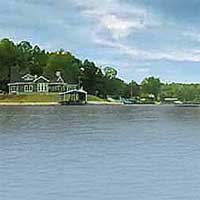
Lake Lemon is a 1,650 surface acre-lake with 24 miles of shoreline. There's bass, crappie, perch, catfish and sunfish to catch. Ice fishing during winter at Lake Lemon produces nice fish. There are multiple areas for fishing from the bank.
Primary fish species to catch
Click images for fishing tips and details about each species.
Today's Weather & Forecast
Marinas
Click here for marinas.
Public Boat Launch Ramps & Landings
Click here for boat ramps.
Fishing License
Click here for a Indiana Fishing License.
Map - Fishing & Access
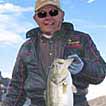
Rick Seaman is a fishing enthusiast with over five decades of fishing experience, a retired tournament fisherman, author of numerous published articles on fishing, and co-author of the book "Bass Fishing - It's not WHAT you throw, It's WHERE you throw it".
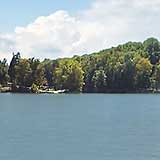
Contact Information
Lake Lemon Marina
9554 E N Shore Dr
Unionville, IN 47468
812 988-9400
Fishing lakes in each state
082725
Lake Lemon, Indiana Report
INDIANA


Sunfish, bass and catfish fishing in south-central IN.













